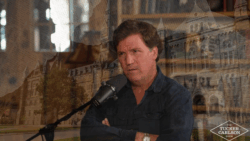A $6.9 million grant from the National Institute of Standards and Technology will allow Georgetown to proceed with construction of its new science building—which has been on hold since 2008 thanks to the recession—and has given the project a deadline: 2012.
“[Georgetown’s] acceptance of the grant … is a promise to NIST that a building will be built by 2012,” Dr. Makarand Paranjape, a Co-Director of the Graduate Studies in the Physics Department and a member of the Science Center Planning Committee said. “If not, the grant would likely have to be returned, so a building is inevitable now.”
Faculty and staff will move into the new research labs in summer 2012, and the building will be fully operational in fall 2012.
In addition to the $6.9 million grant, the University has raised $25 million. On January 22, President John DeGioia said the projected total cost of the building is $98.5 million. The remaining $73.5 million will come from gifts, cash reserves, and loans, according to Professor Timothy Barbari.
Although Georgetown received less than half of the $15 million requested from the NIST, Ali Whitmer, a dean in the college, said that the recipients do not typically receive the full amount of funds requested. DeGioia said that the stimulus grant was very encouraging and will be treated “as if it were a gift.”
The $6.9 million dollars is specifically given to the University to start the Institute of Soft Matter Synthesis and Metrology, a project imagined by Georgetown physics and chemistry professors.
Soft matter—materials that fall between a liquid and a crystalline solid, such as gels, foams, granular matter—plays an increasingly important role in new technologies and industries. Analyzing the structures, movement, and stability of these materials is vital for creating products like drug-delivery vehicles and plastics. The current research of Georgetown professors on soft matter played an important role in Georgetown obtaining NIST funds, said Chair of the Physics Department Dr. Edward Van Keuren.
“The most recent heroes in this story are the scientists whose work persuaded others to fund them,” Associate Provost Marjory Blumenthal said. “People bet on Georgetown, rather than other [universities].”
Some features of the Institute of Soft Matter Synthesis and Metrology may include an advanced imaging/light scattering/spectroscopy center, a mechanical measurements lab, and chemistry facilities for synthesis, according to Dr. Daniel Blair, an assistant professor in the Physics department.
After the new science center is operational, the university plans to renovate the laboratories on the third through seventh floors of Reiss. The Reiss renovations and new science building will almost double the amount of laboratory space on campus.
The additional space will allow science departments to hire more faculty and expand their graduate programs, Barbari said.
A timeline has not yet been set for the renovation of Reiss, but the university intends to begin that project when the building is vacated in 2012, according to Barbari.
“I couldn’t be happier,” Barbari said. “This project is long overdue and it’s extremely gratifying to finally see it take off.”






I’ve always enjoyed roofing work. Gets a little stressful at times but I love it.